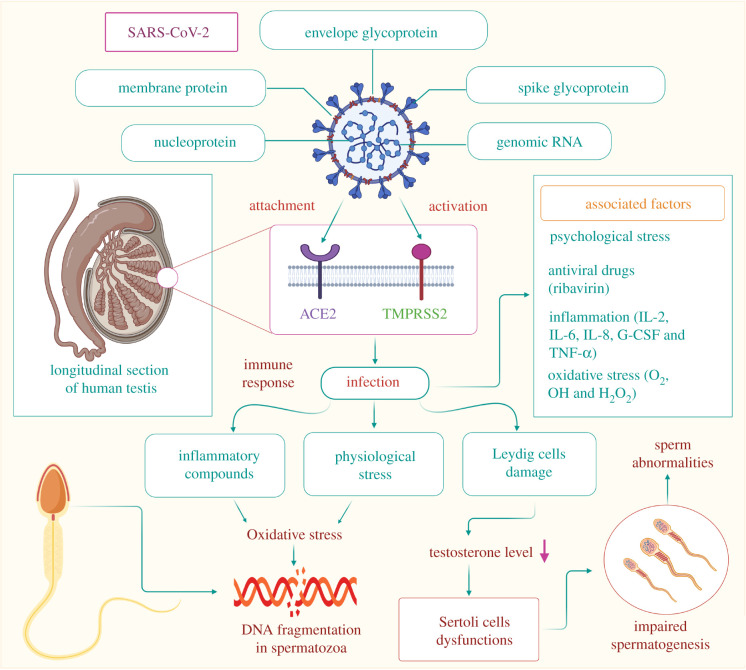Figure 3.
Possible mechanism of SARS-CoV-2 invasion in the reproductive system of infected men and the potential health impacts associated. SARS-CoV-2 gains entry into the reproductive system through the ACE2 and TMPRSS2 receptors present on testicular tissues. The immune response triggered by viral entry produces various inflammatory substances, such as cytokines, which induce OS in testicular cells, which in turn damages the DNA of developing spermatozoa. Various psychological stresses due to SARS-CoV-2 infection may also lead to the production of ROS. SARS-CoV-2 also causes damage to Leydig cells, lowering the production of testosterone, which may ultimately hamper the proper functioning of Sertoli cells. Impaired functioning of Sertoli cells may further disrupt the process of spermatogenesis. However, recent studies have reported low testosterone levels in SARS-CoV-2-infected men with other comorbidities [40,41]. This suggests that normal testosterone may reveal antiviral immune responses to combat SARS-CoV-2 infection in men. SARS-CoV-2: severe acute respiratory syndrome coronavirus 2, ACE2: angiotensin-converting enzyme 2, TMPRSS2: transmembrane protease/serine subfamily member 2, IL: interleukin, G-CSF: granulocyte colony-stimulating factor, TNF-α: tumour necrosis factor alpha, O2•: superoxide radical, OH•: hydroxyl radical, H2O2: hydrogen peroxide.

